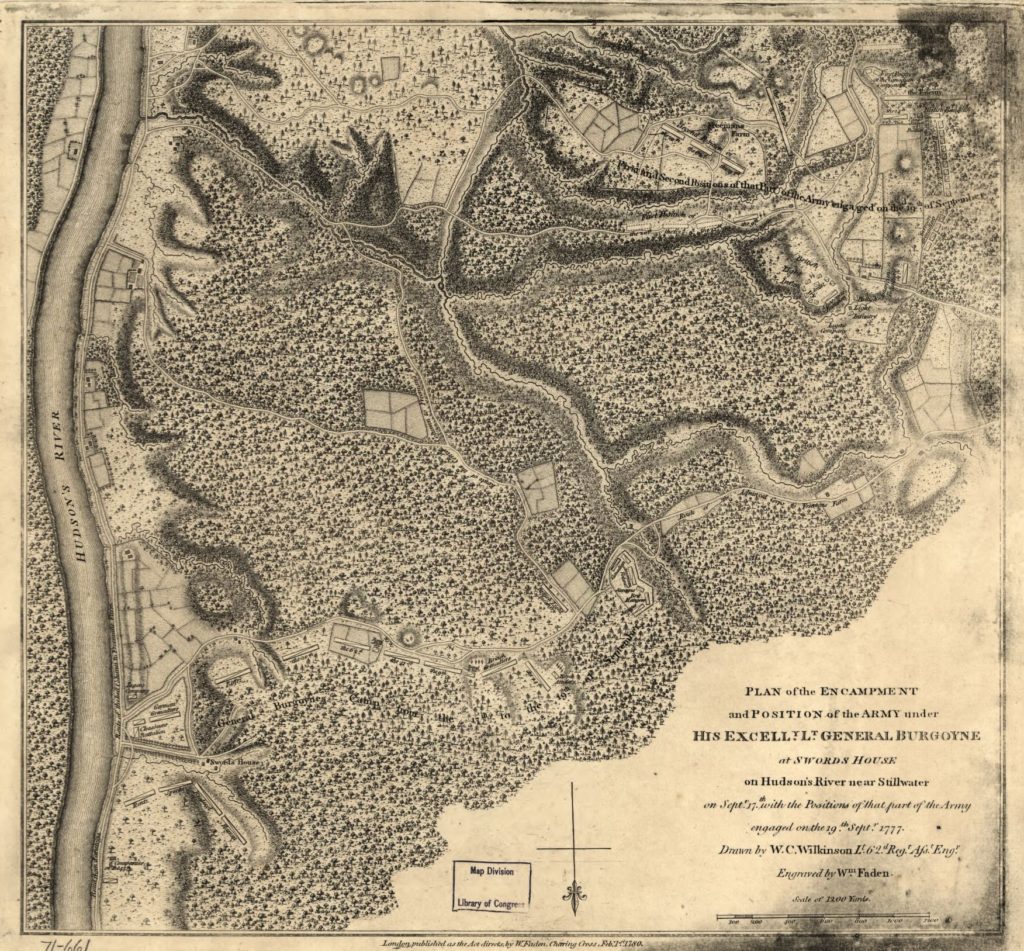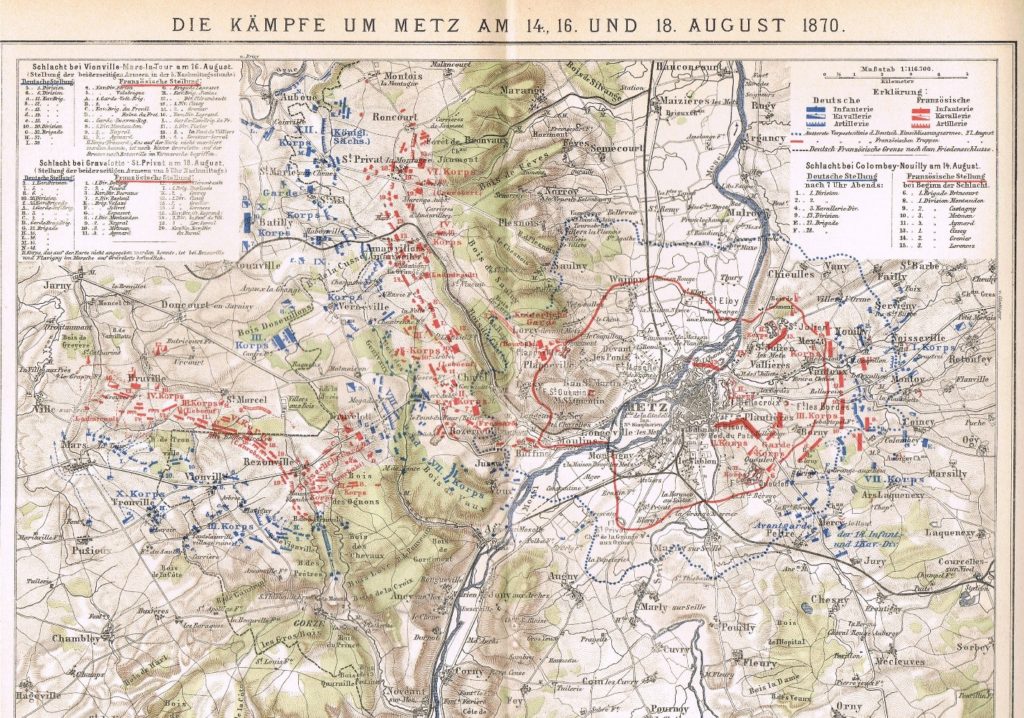We are continuing the list of thirty free scenarios that will be rewards for early backers of the General Staff Kickstarter campaign. These battle scenarios were the top vote-getters voted by you. Click here for the top 1-5 vote-getters.
Not surprisingly, this is not the first time that we have visited the battle of Austerlitz. Below is a screen shot from The War College (UMS III) which is, indeed, an ancestor of the General Staff Wargaming System.
Austerlitz, sometimes called the Battle of Three Emperors, is one of Napoleon’s greatest victories. The General Staff system of multiple command layers should make for an interesting simulation of Austerlitz as orders travel from the Emperor to the subordinate commanders and then down to units. It will be very interesting to see how the new artificial intelligence routines react to this tactical situation.

Fantastic engraving of the battle of Saratoga from the Library of Congress. Definitely click to enlarge.
One of the most interesting features of General Staff is the ability to use the same map for different scenarios and we will certainly do that for the two scenarios at Saratoga in 1777. These two battles – the first considered a Pyrrhic British victory and the second a great American victory under the leadership of General Gates – eventually resulted in Burgoyne’s defeat which certainly encouraged French King Louis XVI to intervene on the side of the Americans.

German map of the battle of Gravelotte – Saint Privat made shortly after the battle. Click to enlarge.
Most Americans – myself included – know very little about the Franco-Prussian War so it was especially interesting to read up on the battle of Gravelotte (or Gravelotte–St. Privat) on 18 August 1870. The largest battle of the Franco-Prussian War, the Prussian victory sealed the fate of the French later trapped and besieged at Metz.

The Battle of Antietam scanned from the Official Military Atlas of the American Civil War and imported into the General Staff Map Editor. Click to enlarge.
The Antietam battlefield is very special place for me. It is not as well known as Gettysburg and – at least during the 1960s – attracted very few visitors. However, almost all of the battlefield is federal property and, unlike Gettysburg, has been preserved. It is eerily quiet.
Antietam is my ‘favorite’ battlefield; if one can have a favorite battlefield. I would visit Antietam with my father most summers. To the right is a picture my father took of me crossing Burnside’s Bridge in 1966. I was twelve at the time. In 1968 my father and I would visit Antietam for the last time. A month later he died of cancer.
Burnside’s Bridge – named after IX Corps Commander Major General Ambrose Burnside who was assigned the task of taking this bridge – is the key tactical feature in the southern part of the Antietam battlefield. We will do a General Staff scenario concentrating on this part of the battle.

















